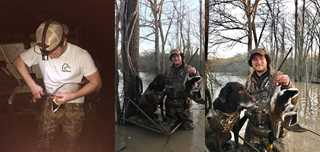Return to Sender
DU biologist harvests mallard he banded two years earlier
DU biologist harvests mallard he banded two years earlier

In February 2018, post-graduate researcher Ethan Massey led a banding study near Augusta, Arkansas, in conjunction with the Osborne Lab at the University of Arkansas at Monticello. Massey, along with other biologists, students, and volunteers, captured and banded more than 2,000 mallards as a part of the research.
Fast-forward to January 2020. Massey, who is now employed as a DU biologist in Arkansas, was hunting on public land near St. Charles when he harvested a banded drake mallard. He added the bird to his strap in a hurry as more ducks circled overhead. It wasnt until the hunting slowed that he took a closer look at the band and made a remarkable discovery. The band numbers coincided with the birds that he had personally banded two years earlier. But there was another way that Massey knew he had banded the mallard.

I band ducks a little differently; I put them on upside-down, which is something I learned from another researcher, he said.
Massey harvested the drake mallard a little more than 80 miles from where he had banded it. What are the odds, right? he said. The fact that this bird made two trips, presumably back to the breeding grounds, before returning to this area in 2020 is impressive.
Ducks Unlimited uses cookies to enhance your browsing experience, optimize site functionality, analyze traffic, and deliver personalized advertising through third parties. By continuing to use this site, you agree to our use of cookies. View Privacy Policy